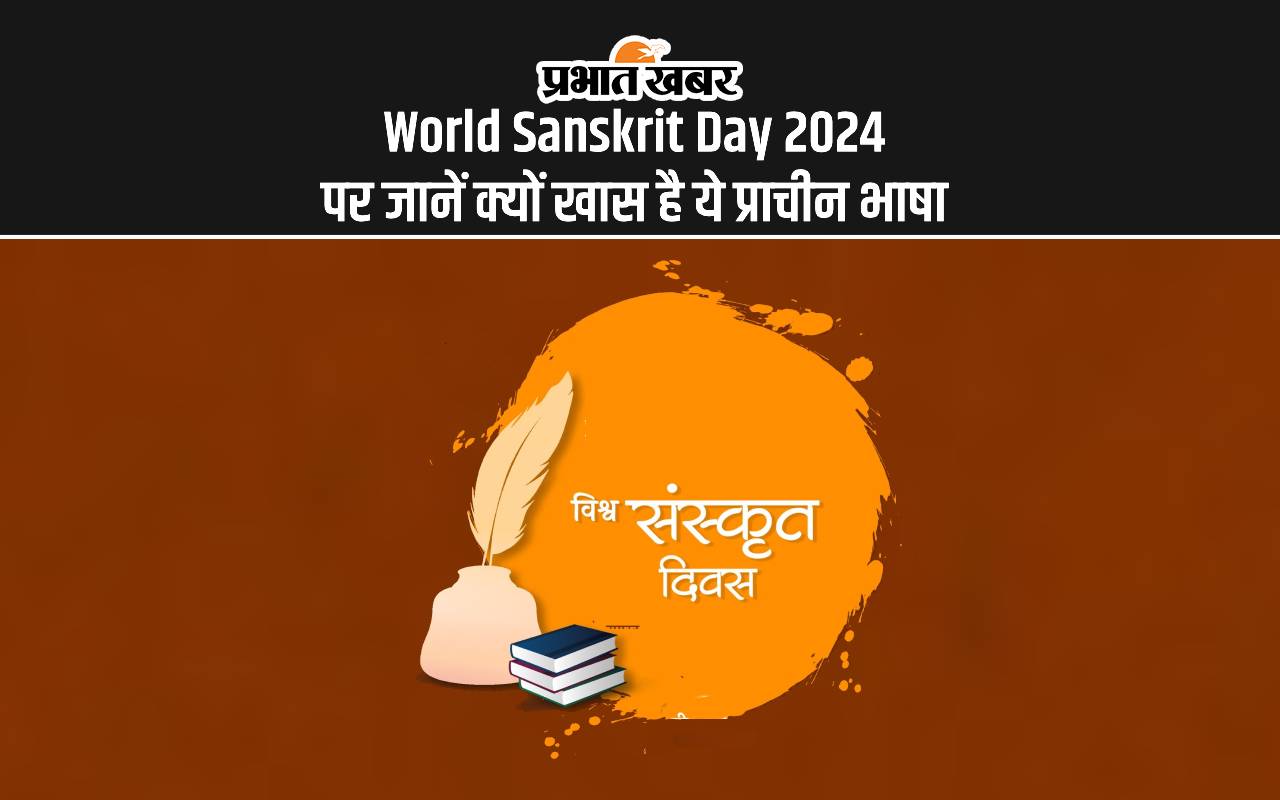World Sanskrit Day 2024: World Sanskrit Day is celebrated every year on Shravan Purnima. This year this special day is celebrated today on 19th August. This day is also called as Sanskrit Day or Vishwa-Sanskrit-Daynam (विश्वसंसक्रित-दिनम्). Let us know here about the importance of this ancient language.
What is the importance of Sanskrit language?
World Sanskrit Day, also known as Vishwa-Sanskrit-Dinam, holds great significance as it celebrates the richness and historical importance of Sanskrit. Believed to have originated around 3,500 years ago, this ancient language is not only the classical language of Hinduism but also a treasure trove of Indian culture, philosophy and scientific knowledge. This day is celebrated on the full moon day of the month of Shravan, which usually falls in August. It is a day to honour the sages who composed the Vedas and to recognise the beginning of the academic year in the gurukuls of ancient India, where students began their Vedic studies. World Sanskrit Day reminds us of the beauty of the language and its important role in shaping India’s cultural and intellectual heritage.
What is the history of the Sanskrit language?
Sanskrit is a classical South Asian language belonging to the Indo-Aryan branch of the Indo-European languages. It emerged in South Asia when its predecessor languages spread there from the northwest in the late Bronze Age. It is the sacred language of Hinduism, the language of classical Hindu philosophy, and the historical texts of Buddhism and Jainism. It was a contact language in ancient and medieval South Asia and after the spread of Hindu and Buddhist culture into Southeast Asia, East Asia, and Central Asia in the early medieval era, it became the language of religion and high culture and in some of these regions it became the language of the political elite.
Sanskrit is similar to many varieties of older Indo-Aryan languages. The oldest of these is found in the Vedic Sanskrit Rigveda, a collection of 1,028 hymns composed between 1500 BC and 1200 BC by Indo-Aryan tribes who migrated from present-day Afghanistan through northern Pakistan to northern India. Kalidasa, the greatest Sanskrit playwright, wrote in Classical Sanskrit and the foundations of modern arithmetic were first laid in Classical Sanskrit. However, the two major Sanskrit epics, the Mahabharata and the Ramayana, were composed in various oral narrative registers called Epic Sanskrit which were used in northern India between 400 BC and 300 AD and were roughly contemporary with Classical Sanskrit.
The status, function and place of Sanskrit in India’s cultural heritage is recognised by its inclusion among the languages of the Eighth Schedule of the Constitution of India. However, despite revival efforts, there are no speakers of Sanskrit as a first language in India. Sanskrit has been taught in traditional Gurukuls since ancient times; today it is widely taught at the secondary school level. The oldest Sanskrit college is Banaras Sanskrit College, which was established in 1791 during the rule of the East India Company. Sanskrit is widely used as a ceremonial and ritual language in Hindu and Buddhist hymns and mantras and in South Indian classical music. There are 50 letters in Sanskrit: the first 16 are vowels and the next 34 are consonants.
Disclaimer:
The information contained in this post is for general information purposes only. We make no representations or warranties of any kind, express or implied, about the completeness, accuracy, reliability, suitability or availability with respect to the website or the information, products, services, or related graphics contained on the post for any purpose.
We respect the intellectual property rights of content creators. If you are the owner of any material featured on our website and have concerns about its use, please contact us. We are committed to addressing any copyright issues promptly and will remove any material within 2 days of receiving a request from the rightful owner.

